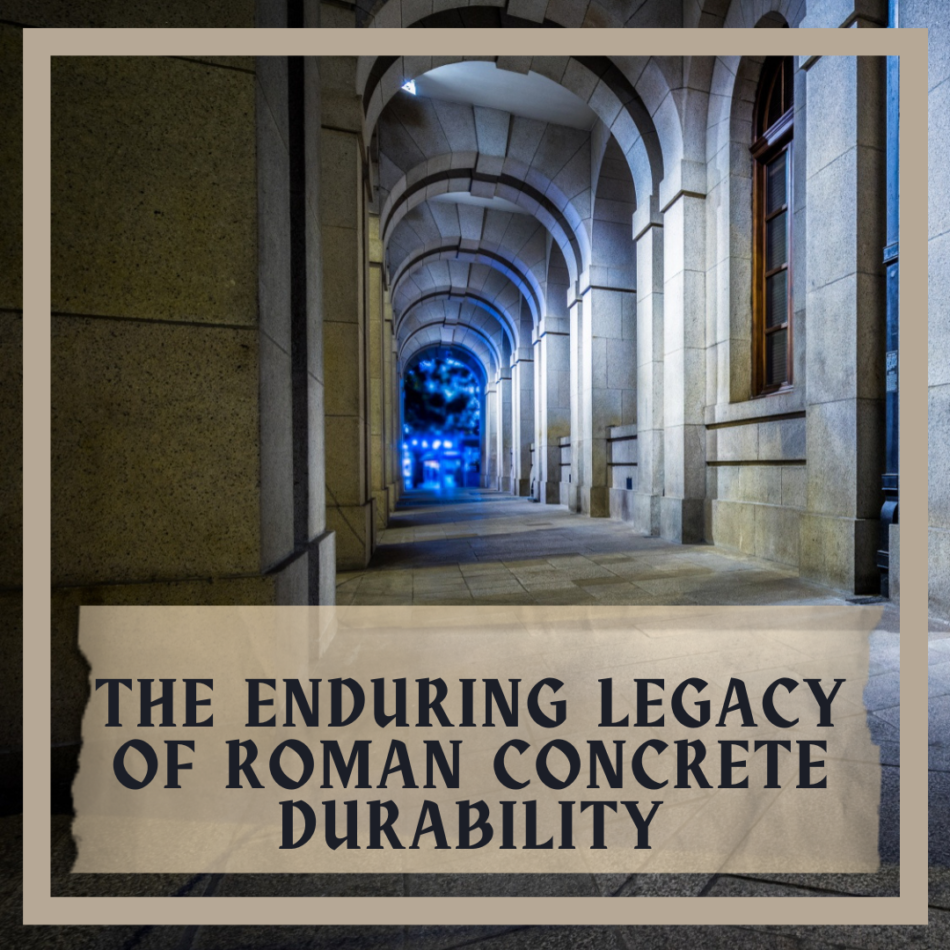The ancient Romans excelled in engineering prowess, creating enduring infrastructures like roads, aqueducts, and monumental buildings. A key to their lasting legacy is the durability of Roman concrete. Structures like the iconic Pantheon, boasting the world’s largest unreinforced concrete dome since 128 C.E., stand intact even today. Incredibly, some Roman aqueducts continue to supply water to Rome, while contrasting modern concrete constructions often degrade within mere decades.

The annals of architectural and engineering history are replete with marvels that speak volumes about the capabilities of our ancient predecessors. Among the standout materials that have left a mark (literally and figuratively) is Roman concrete. This ancient formulation has stood the test of time, outlasting many modern alternatives and presenting a paradox that researchers have been keen to unravel. Why is Roman concrete so durable, and what can we learn from its composition and application?
Decades of research into the resilience of ancient Roman concrete, especially in challenging environments like docks and earthquake zones, has paid off. A collaborative effort from MIT, Harvard, and European labs has now uncovered the age-old techniques that gave Roman concrete its self-healing properties.
A Historical Glimpse
Roman concrete, known as ‘opus caementicium’ in Latin, became the building material of choice for the Roman Empire, underpinning its grand constructions, from majestic aqueducts to sprawling amphitheaters. Structures like the Pantheon in Rome, boasting the world’s largest unreinforced concrete dome since 128 C.E., are still intact today, a testament to the genius of Roman engineering.
Underlying Factors of Durability
It wasn’t merely by accident that Roman concrete became a synonym for durability. Here are some factors that contributed to its impressive longevity:
- Material Composition: The ancient Romans used a mixture of volcanic ash, lime, and seawater to bind with volcanic rocks. This unique mixture resulted in a mortar that prevented cracks from spreading, a common problem in modern concrete.
- Environmental Benefits: The incorporation of volcanic ash, locally known as ‘pozzolana’, not only made the concrete more durable but also had environmental benefits. This ash reacted with seawater, creating a rare crystal called Al-tobermorite, which strengthened the concrete and reduced its carbon footprint.
- Strategic Application: Romans were not just adept in creating the mixture; they were also strategic in its application. Structures were built in layers, allowing each to be set properly before the next was added, reducing potential weak points.
Modern Implications and Research Breakthroughs
The endurance of Roman concrete has become the proverbial “gold standard” for modern engineers and architects. MIT, Harvard, and European laboratories have delved deep into the mystery of this ancient material. Their findings? The Romans unknowingly incorporated ‘self-healing’ properties into their concrete. This self-healing capability is attributed to the high lime content, which, over time, reacts with rainwater to fill emerging cracks.
This discovery has immense implications for today’s construction industry. If modern concrete could mimic these self-healing properties, the longevity of our infrastructures would increase manifold, potentially saving billions in maintenance costs and reducing environmental impacts.
Relevance in Today’s World
In an age where sustainability is not just a buzzword but a necessity, understanding and replicating the Roman concrete formula could be revolutionary. Our current construction methods are resource-intensive and contribute significantly to carbon emissions. Adopting a Roman-inspired approach could:
- Reduce the need for frequent repairs and reconstructions, conserving resources.
- Lower the carbon footprint of construction projects.
- Provide more robust structures, especially in areas prone to natural disasters.
In Conclusion
The enduring legacy of Roman concrete durability isn’t just a testament to ancient engineering prowess but also a guiding light for modern construction practices. As we continue to decipher the secrets of ‘opus caementicium’, we inch closer to sustainable construction practices that could redefine our built environment for centuries to come.
In paying homage to the architectural feats of the Romans, we don’t just appreciate the splendors of the past, but we also pave the way for a future where our structures, like those in ancient Rome, can stand tall and proud for millennia.






